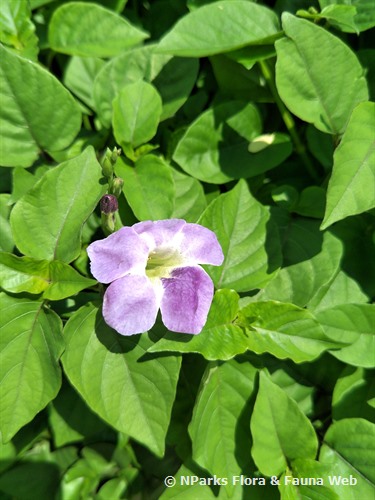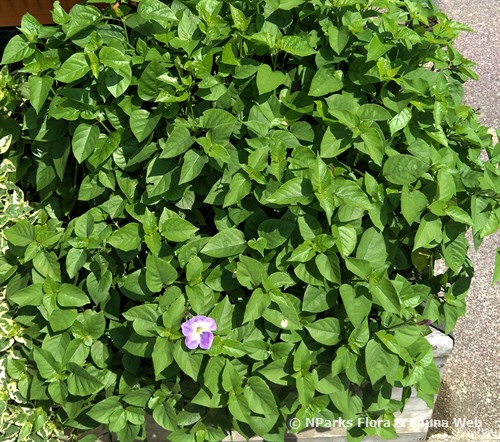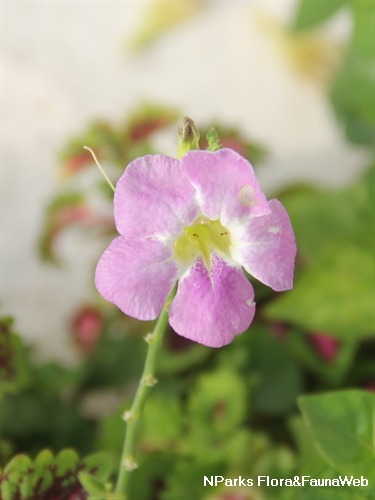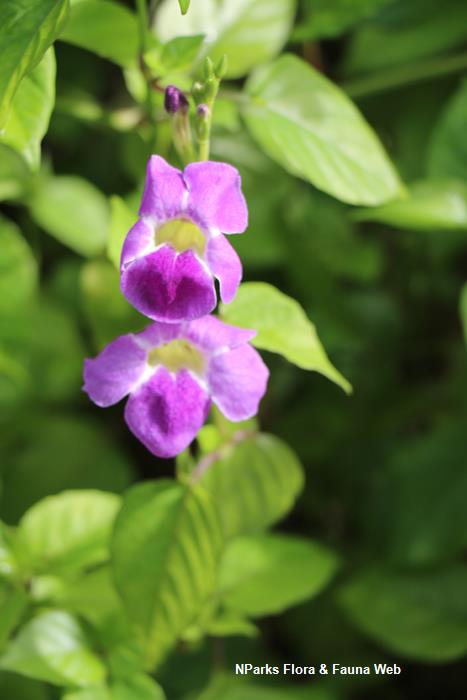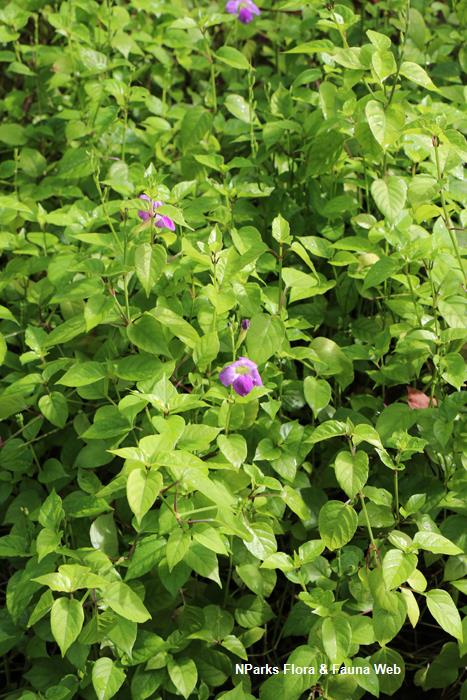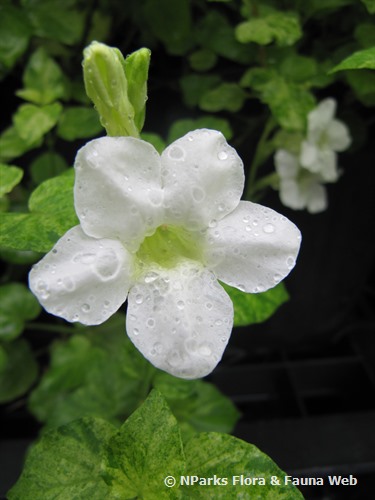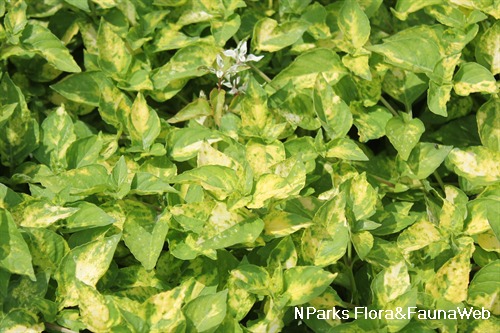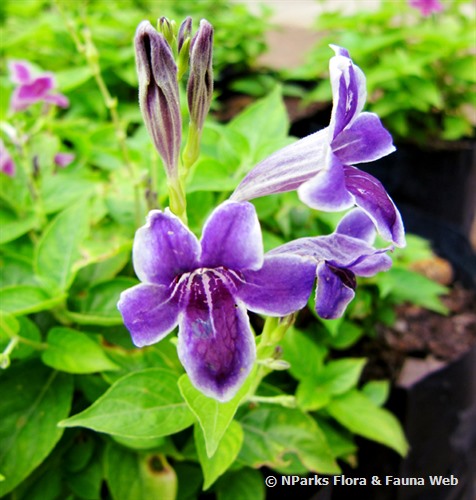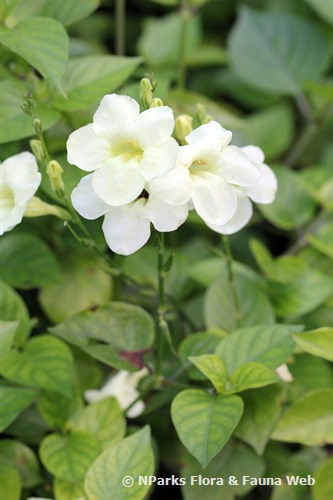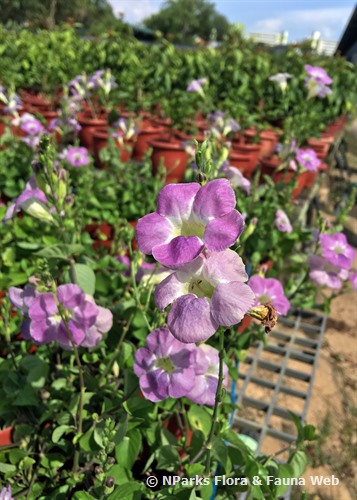
Back
Asystasia gangetica (L.) T. Anderson
| Family Name: | Acanthaceae |
| Synonyms: | Asystasia coromandeliana, Justicia gangetica |
| Common Name: | Coromandel, Chinese Violet, Creeping Foxglove, Ganges Primrose |
Name
Classifications and Characteristics
| Plant Growth Form | Shrub |
|---|---|
| Maximum Height | 0.3 m to 0.6 m |
Biogeography
| Native Distribution | India, Malaysia |
|---|
Description and Ethnobotany
| Growth Form | Evergreen herbaceous perennial with a creeping growth habit. |
|---|---|
| Foliage | Opposite leaves are ovate with entire leaf margin (8 cm long, 4 cm wide). |
| Flowers | Trumpet-shaped flowers have 5 purple, round to obovate lobes (3 - 4 cm long, 2.5 - 3.8 cm wide). The lower lobe (known as a palate) is dark purple in the center. The inflorescence is known as a terminal raceme, consisting of stalked flowers arranged along 1 axis and located at the branch tips. This species is free-flowering. |
| Fruit | Explosively dehiscent fruits known as capsules are initially green, but becomes brown and dry after dehiscence (1.9 - 2.5 cm long). The fruit resembles an upside down cello and contains 4 whitish to brownish black, circular seeds which are flattened and beaked (5 mm long, 1 mm thick). |
| Habitat | In Australia, this species is considered invasive and a serious threat to native ecosystems. |
| Cultivation | This fast-growing species grows best under semi-shade or full shade, but plants grown in full sun require sufficient moisture. It is tolerant of many soil types, but optimal growth occurs in well-drained, but moist soils that are rich in compost. Individuals should be spaced 0.45 - 0.6 m apart. This species can grow aggressively and should be restrained with pruning. Propagate by seed, stem cuttings or layering. |
| Etymology | The genus "Asystasia" means inconsistency, referring to radially symmetrical flowers in this genus which is uncommon in the family Acanthaceae. The species epithet "gangetica" was named after the Ganges River in India. This species was likely observed near the Ganges River. |
| Ethnobotanical Uses | Edible Plant Parts : Edible Leaves |
Landscaping Features
| Desirable Plant Features | Ornamental Flowers |
|---|
Fauna, Pollination and Dispersal
| Fauna Pollination Dispersal Associated Fauna | Butterfly-Attracting, Bee-Attracting |
|---|
Plant Care and Propagation
| Light Preference | Semi-Shade, Full Sun |
|---|---|
| Water Preference | Moderate Water |
| Rootzone Tolerance | Drought Tolerant |
Foliar
| Mature Foliage Colour(s) | Green |
|---|---|
| Leaf Area Index (LAI) for Green Plot Ratio | 4.5 (Shrub & Groundcover - Dicot) |
Floral (Angiosperm)
| Flower Colour(s) | Purple |
|---|
Image Repository
Others
| Master ID | 407 |
|---|---|
| Species ID | 1703 |
| Flora Disclaimer | The information in this website has been compiled from reliable sources, such as reference works on medicinal plants. It is not a substitute for medical advice or treatment and NParks does not purport to provide any medical advice. Readers should always consult his/her physician before using or consuming a plant for medicinal purposes. |

